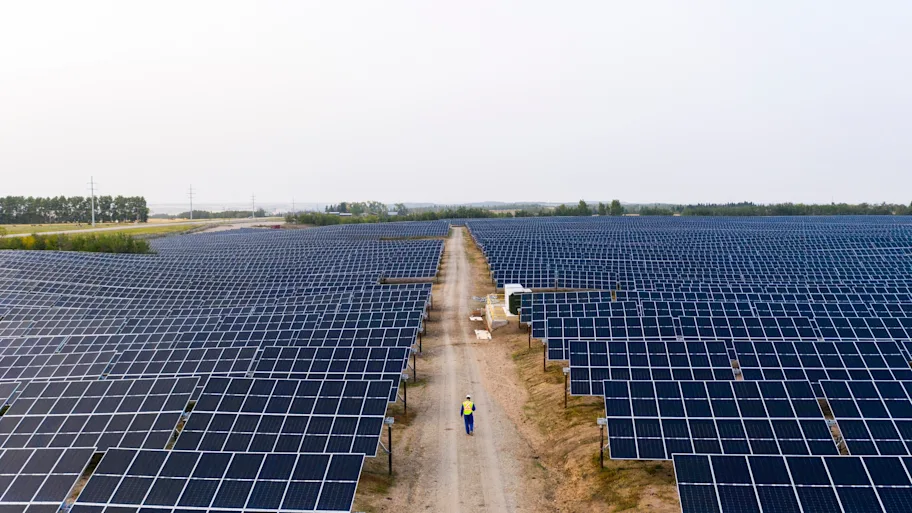
- Science news
- Featured news
- From whale sharks to a sustainable ocean economy: Here are five Frontiers articles you won’t want to miss on World Ocean Day
From whale sharks to a sustainable ocean economy: Here are five Frontiers articles you won’t want to miss on World Ocean Day

For more than 20 years, June 8 has marked World Ocean Day, when people from all corners of the planet come together to protect and restore our blue planet. To celebrate, we’re highlighting five recently published Frontiers articles on the ocean and the fantastic animals that live there.
Whale sharks at Mafia Island might have favorite meals they eat consistently
For decades, scientists have been learning more about whale sharks, the world’s biggest fish. Once thought to be sparsely distributed throughout the world’s oceans, studying aggregation sights has provided more insights about whale shark ecology.
Now, by means of isotopic analysis, an international team of researchers has studied the diet of a small but unique group of whale sharks that aggregates in the western Indian Ocean at Mafia Island, Tanzania. They published their results in Frontiers in Fish Science.
They found that the whale sharks around Mafia Island may be creatures of habit who repeatedly feed on the same prey sources over time, suggesting a consistent and relatively small dietary width. Yet, there was some variation found between the dietary habits of female and male sharks, as well as larger and smaller whale sharks. The results showed that male and larger whale sharks may be feeding on prey further up on the food chain, while female and smaller whale sharks might be targeting a greater diversity of prey.
Article link: https://www.frontiersin.org/journals/fish-science/articles/10.3389/frish.2025.1414859/full
What conflicts does blue economy cause, and how can they be avoided?
Blue economy is a concept of a sustainable ocean economy that balances economic growth, environmental protection, and social equity. In some ocean economic sectors, such as shipping, offshore (renewable) energy, and coastal tourism, blue economy is growing rapidly.
Blue economy, however, also means humans are expanding their activities further into the world’s oceans, where interests may overlap. In a recently published Frontiers in Marine Science article, researchers in Canada and Spain highlighted potential conflicts that may arise between sectors.
The authors identified 11 potential avenues for conflicts which are likely to arise within blue economy sectors. Each examined sector has potential to generate conflict in at least four ways, they wrote. For example, the offshore oil and gas sector may lead to conflicts between large- and small-scale actors, cause regulatory issues, and have environmental, socioeconomic, and cultural impacts. To mitigate these conflicts, the authors suggested strategies and actions, including effective governance, sustainable practices, and international cooperation.
Article link: https://www.frontiersin.org/journals/marine-science/articles/10.3389/fmars.2025.1499386/full
When a marine heatwave caused some bird species to decline, others rushed to fill the spot
Between 2014 and 2016, the Pacific marine heatwave (PMH) – the strongest and longest marine heatwave on record – caused intense environmental disturbance in the northeastern Pacific Ocean. Such periods of high ocean temperatures impact the entire marine ecosystem, including marine birds.
Writing in Frontiers in Marine Science, researchers in the US examined marine bird data collected over nine years before the 2014-2016 PMH to estimate bird densities, detect shifts in community composition, and determine which species were driving observed changes at Prince William Sound off the Gulf of Alaska.
They found that marine bird densities were significantly higher before than after the PMH. In addition, they found that species composition had shifted. Density numbers of birds including murres, loons, and cormorants, all birds that hunt by diving at depths of 40 to 200 meters, declined. The density of marbled murrelets, small seabirds that typically forage at depths between 40 to 50 meters, however, increased. They were the only of 30 observed species that increased in numbers after the heatwave. These changes in bird densities and species composition may relate to prey availability, the researchers wrote.
Article link: https://www.frontiersin.org/journals/marine-science/articles/10.3389/fmars.2025.1575748/full
Mangroves could save coasts from eroding, no matter where they grow
Erosion and flooding are significant threats to coastal areas, especially if people live close to affected coasts. While much effort has been made to prevent erosion through seawalls and groins, a nature-based solution might be more cost-efficient and environmentally friendly, scientists in Germany and Ghana wrote in a recent Frontiers in Marine Science article.
Mangroves have long been shown to protect shorelines due to their ability to attenuate waves and trap sediment. In their article, the researchers assessed the effectiveness of using mangroves that grow naturally on the eastern coast of Ghana as a means of protecting the region from increasing erosion. They compared the current scenario, based on a 2023 dataset, and a future scenario, for which regional sea level rise projections based on the IPCC Sixth Assessment Report were used.
They found the protective capacity of mangroves could reduce sediment volume erosion by 53% in the current scenario, and by 97% if high-density mangroves were introduced to the berm. If mangroves were densely planted in the intertidal zone, the researchers found a 97% reduction in sediment volume erosion for the current, and a 99% reduction for the future scenario.
Article link: https://www.frontiersin.org/journals/marine-science/articles/10.3389/fmars.2025.1526082/full
Which tools do we have to protect sharks and other wildlife?
Illegal and unsustainable wildlife trade present a pressing problem to biodiversity conservation, leading to decimating wildlife populations and driving species to the brink of extinction. Yet, the integration of technology into conservation may mark a shift into how wildlife can be better protected.
Writing in Frontiers in Ecology and Evolution, an international team of researchers showcased how innovative technological tools can detect and disrupt illegal wildlife trade and other operations that harm endangered and protected species, including sharks.
In the Conkouati-Douli National Park in the Republic of Congo, a marine protected area, efforts are made to reign in illegal and unregulated fishing, but these operations remain a threat to sharks. Technologies like Skylight, a maritime monitoring tool that uses satellite data and AI algorithms to determine vessel activity, could be used to identify vessels involved in unreported and unregulated fishing. Integrating Skylight’s AI capabilities into EarthRanger – a tool that allows for ecological monitoring and wildlife management – could generate alerts when vessels enter the protected area. This integration allows for improved detection capabilities of illegal fishing vessels and quicker compliance response times, the authors reported.
Article link: https://www.frontiersin.org/journals/ecology-and-evolution/articles/10.3389/fevo.2025.1527976/full
REPUBLISHING GUIDELINES: Open access and sharing research is part of Frontiers’ mission. Unless otherwise noted, you can republish articles posted in the Frontiers news site — as long as you include a link back to the original research. Selling the articles is not allowed.







